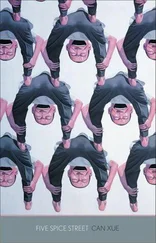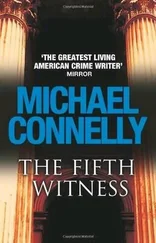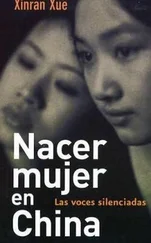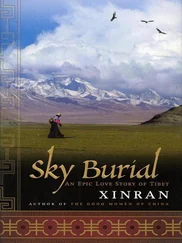The cautionary principle has governed public expression in China too long to be discarded in less than thirty years; China's freedom of speech continues to be hedged with idiotic obstinacy, ignorance and fear.
But I can wait no longer. Thanks to the destruction of the past wrought by the Cultural Revolution, and ongoing censorship of the media and control of school textbooks, China's younger generations are losing touch with earlier generations' struggles for national dignity. The individuals who fought for twentieth-century China are mocked or dismissed for their unquestioning loyalty to now outmoded revolutionary ideals. As they search for new values against the uncertainties of the present and the debunking of the past, many young people today refuse to believe that, without the contributions of their grandparents and great-grandparents, the confident, modernising China they now know would not exist.
After almost twenty years of interviews and research as a journalist, I am worried that the truth of China's modern history – along with our quest for national dignity – will be buried with my parents' generation.
Over these two decades, I compiled a list of around fifty individuals I had encountered, each with astonishing stories to tell. From these, I sifted out a final twenty names to interview for this book. Among my original fifty were numerous national celebrities whose inclusion would have guaranteed my book public attention, even notoriety. I decided, however, that they would have other opportunities to tell their stories, either personally, or through their children. I concluded, instead, that it would be of greater historical value to record the stories of ordinary people, of people who would otherwise lack the fame, money and rank to get their equally astonishing experiences heard. Although I know I cannot hope to summarise the past hundred years of modern Chinese history in the experiences of only twenty people, I firmly believe that these individuals are a part of, and witnesses to, this history – of its notable successes and tragic failures.
The average age of my interviewees was in the seventies; the oldest was ninety-seven. Uncertainties about their physical health gave an added sense of urgency to my project.
Take, for example, the story of Hu Feibao (not his real name), a former bandit along the old Silk Road. After skirmishes with the People's Liberation Army throughout the 1950s, in the early 1960s Hu was finally arrested and condemned to life imprisonment. In the 1980s, he was transferred to a labour camp, where he has worked ever since. When I interviewed him there, from the late 1980s, he spoke to me of the bandit culture he had known along the Silk Road.
The gangs were like clans, he told me, with every bandit sharing the gang surname. Most were of mixed blood – some combination of Chinese, Tibetan, Mongolian and Muslim. No one knew exactly who he was descended from, as there was no concept of normal family life. A bandit knew who his father was, but not his mother, because only boys were kept on in the gang. Girls would be left behind with their mothers – women who had been kidnapped to bear children.
His fellow bandits had never known him as Hu Feibao. Members of the gang were forbidden to tell outsiders – and especially not police – their names. "If they'd known our real surnames, they'd have used them to curse our ancestors." Hu Feibao (literally, Flying Dynamite Hu) was what the locals called him, because of the speed at which his gang moved. Growing up, he'd never heard of the "Silk Road"; he only knew it as the "Cash Highway". After he was arrested in 1963, the policeman who had travelled from Beijing to interrogate him about his "criminal activities on the Silk Road". "Where's the Silk Road?" Hu asked in return.
His confusion was entirely natural: of neither local or ancient provenance, "the Silk Road" was a term invented by the German geographer Baron Ferdinand von Richthofen in 1877, to identify the trade route between classical Europe and Asia.
In 139 BC, Zhang Qian, an envoy of the Han emperor Wudi, led the first embassy from the Chinese capital of Chang'an into the regions of the far west. One of his aides travelled as far as Anxi (Iran) and Shendu (India). All the countries visited sent ambassadors to accompany the embassy back to China. In ad 73, after the Silk Road had been closed by war, another envoy, Ban Chao, led a thirty-six-strong embassy on a second mission out of China, to reopen communications with the West; his aide, Gan Ying, almost reached Daqin (the Roman Empire), then swerved off towards the Persian Gulf, thereby extending the original trade route. This was the "desert" Silk Road, existing alongside the Silk Road of the plateaux, stretching from Chang'an, through the plateaux of Qinghai and Tibet, through to South Asia, and the maritime Silk Road, from Quanzhou, across the Taiwan Strait and through South-East Asia.
Through desert, plains and mountains, this 3,000-mile road – so romantically named by Richthofen after the prized commodity that travelled along it – offered a passage between ancient China and the Mediterranean. And as rivers shifted course and mountains became impassable with snow, so forks developed in it.
The bandit culture that Hu Feibao knew was that of the northern edge of the desert Silk Road: heading north out of Xi'an to Hami, through Jimsa and Urumqi, then on past Shihezi, Huocheng and Ili, before finally ending up on the coast of the Black Sea. His memories of the "Cash Highway" had none of the romantic associations in which Western imaginings of the Silk Road – of its winding, luxury-laden caravans and setting suns – are steeped. The route he had known was strewn with bleached white bones – some of camels, some of humans. "It hardly ever rained," he told me. "During the droughts, you felt like all your blood had been boiled dry. The sandstorms were like shifting graves: they buried men alive. For us, however, they were the best time for ambushes, even though they might kill us, because trade caravans always stopped; they'd never try to move on through them." Hu Feibao and his fellow horsemen lived entirely off their wits: off their ability to exploit often fatally unpredictable local conditions. Born and raised among bandits, as early as he could remember he had always yearned to follow the example of Danbin Jianzan, the "Black Warrior Lama".
After my first interview with Hu, I spent some time researching this mysterious Black Warrior Lama. Back in the early 1990s, there were few computers – and no Internet, of course – in China, and hardly any archives or materials available on modern police history. Although a couple of veteran policemen said they had heard of him, I could find no written sources. Later on, with the help of an army official who had researched the northwestern warlord Ma Bufang (ruler of Qinghai in the 1930s and 1940s), I discovered a book by a Danish scholar called Henning Haslung, Men and Gods in Mongolia , from which I learned that, towards the end of the nineteenth century, Danbin Jianzan had been a tribal leader in a part of Mongolia under Russian rule. Imprisoned by the Tsar for usurping local power, Danbin Jianzan was subsequently exiled out into the steppe. After the 1911 revolution in China and the collapse of Qing authority in Mongolia, he and his troops overran and occupied the key north-eastern stronghold of Kebuduo. As various factions battled for control of the country, the Mongolian Revolutionary Party, with the help of the Soviet Red Army, encircled his power base. Breaking out, he fled into the wild deserts of Xinjiang and Gansu, where he survived by robbing merchants and traders until, somewhere around the mid-1920s, he mysteriously disappeared. A 1994 Russian monograph, The Head of the Black Lama , and a Mongolian newspaper article from 1999 revealed that, in 1924, Danbin and his troops had been wiped out by some six hundred crack troops from a special unit sent by the ruling Soviet faction in Mongolia. Danbin's head now sits, perfectly preserved, in a museum in St Petersburg built during the reign of Peter the Great.
Читать дальше












